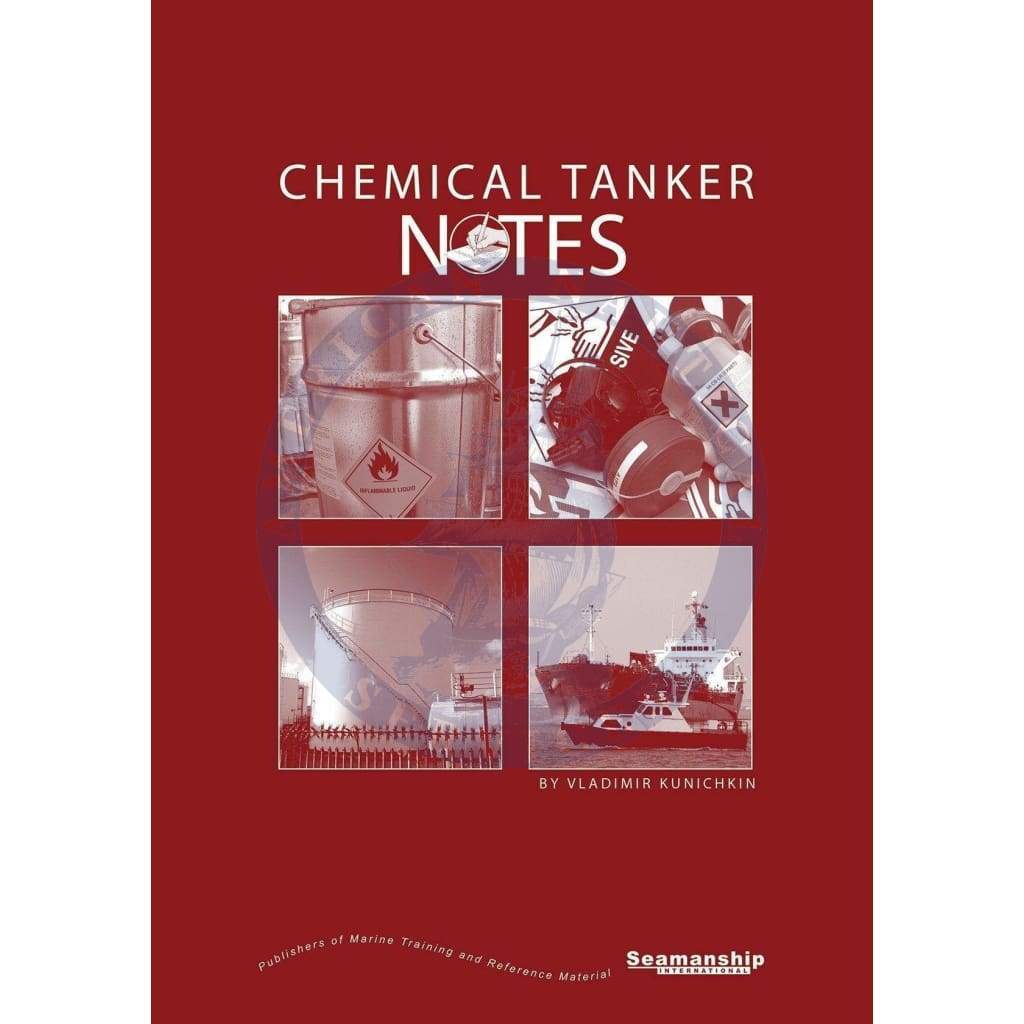Overview
All operations, from commencing the voyage until its completion, are covered in this detailed, step-by-step guide to chemical tanker practice. The publication covers topics such as voyage planning, tank cleaning, loading, conditions of carriage, discharge and ballasting.
There are many operations that are carried out simultaneously onboard a chemical tanker, such as loading, discharging, tank cleaning, gas freeing, ballasting, deballasting and so on. However, the main rule onboard any tanker is that all operations are to be conducted in a competent and professional manner. Certain operations must be suspended if there is any threat or likelihood of loss of control. The chemical tanker fulfils the most extreme idea of customer satisfaction by offering ‘Just in Time’ (JIT) transport of a multitude of liquid cargoes. This book is designed to provide some answers on ‘what to do’ and ‘how to do it’ for officers and cadets on chemical tankers. The subjects are organised in the order that they occur, from the receipt of voyage orders to the completion of cargo discharge and the practice of pre-wash.
Content
Chapter 1 The Voyage
1.1 Voyage Orders
1.2 Voyage Planning
1.3 Stowage Planning
1.4 Notice of Readiness
Chapter 2 Tank Cleaning
2.1 Cleaning and Disposal Procedures
2.2 Cleaning Methods
2.3 Cleaning
2.4 Planning Tank Cleaning Operations
2.5 Overhaul and Tests
2.6 Team Briefing
2.7 Precautions Against Unauthorised Discharge
2.8 Safe Cleaning
2.9 Visual Inspection of the Tank
2.10 Wallwash Tests
2.11 Preload Tests
2.12 Notice of Readiness
Chapter 3 Loading
3.1 Safety Precautions
3.2 Transportation Requirements
3.3 Tanks Inspection
3.4 Safety and Data Sheet
3.5 Loading and Deballasting
3.6 Cargo Tank Vapour Return Systems
3.7 Loading Rate
3.8 Loading Temperature
3.9 Sampling
3.10 Cargo Calculation
3.11 Disconnection of Manifolds
3.12 Cargo Discrepancy
3.13 Short Loading
3.14 Letter of Authorisation
3.15 Bill of Lading
3.16 Time Sheet
3.17 Loading Set of Cargo Documents
Chapter 4 Departure
Chapter 5 Conditions of Carriage
5.1 Heated Cargo
5.2 Nitrogen Blanket Cargo
5.3 Re-circulation
5.4 Inhibited Cargoes
Chapter 6 Arrival at Discharge Port
6.1 Reducers
6.2 Samples
6.3 Bill of Lading
6.4 Cargo Measurement and Calculation
6.5 Claims
6.6 Safety Precautions
6.7 Discharging Plan
6.8 Palm Oil
6.9 Paraffin Wax, Slack Wax
Chapter 7 Discharging
7.1 Pumps
7.2 Commencing Discharge
7.3 Main Discharge
7.4 Stripping
7.5 Blowing the Line
7.6 Inspection
7.7 Bill of Lading
Chapter 8 Ballasting
8.1 Ballast Eductors
Chapter 9 Prewash
9.1 New Ships
9.2 Existing Ships
9.3 Procedures
9.4 Inert Gas Generator
Chapter 10 Terms and Definitions
Appendices
Appendix 1 Compatibility Chart
Appendix 2 Alphabetical Listing of Compounds
Appendix 3 Exceptions to the Compatibility Chart
Appendix 4 Exceptions to the Compatibility Chart
Appendix 5 FOSFA List of Banned Immediate Previous Cargoes
Appendix 6 FOSFA List of Acceptable Previous Cargoes
Appendix 7 World Chemical Trade
Appendix 8 International Certificate of Fitness for the Carriage of Dangerous Chemicals in Bulk
Appendix 9 NLS Certificate
Appendix 10 Procedures and Arrangements Manual
Appendix 11 Cargo Record Book
Appendix 12 Cargo Hose Record
Appendix 13 Shipboard Marine Pollution Emergency Plan (SMPEP)
Appendix 14 Guidelines in developing a SMPEP
Details
Title: Chemical Tanker Notes
Number of Volumes: 1
Number of Pages: 234
Product Code: 4304
ISBN: ISBN 13: 978-1-905331-16-1 (9781905331161), ISBN 10: 1-905331-16-9 (1905331169)
Published Date: January 2006
Binding Format: Paperback
Book Height: 210 mm
Book Width: 150 mm
Book Spine: 10 mm
Weight: 0.60 kg
Author: Vladimir Kunichkin








